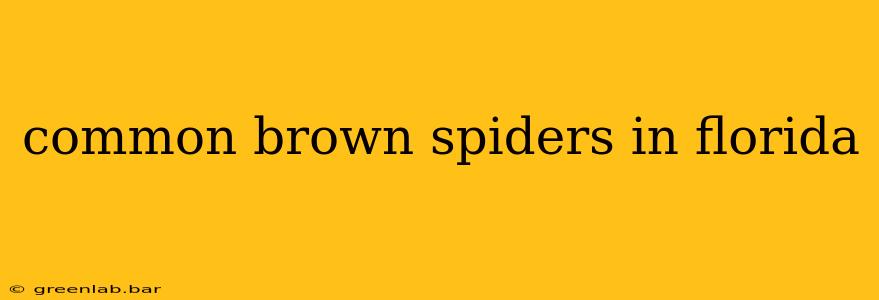Florida's warm climate provides a haven for a diverse range of spider species, many of which are harmless. However, some brown spiders can cause concern due to their potential bite. This guide will help you identify common brown spiders found in Florida and understand their significance. We'll explore their appearance, habitat, and the potential effects of their bites. Note that spider identification can be challenging, and if you are ever bitten by a spider and experience concerning symptoms, seek medical attention immediately.
Identifying Common Brown Spiders in Florida
Several brown spiders call Florida home. While many are harmless, distinguishing features are crucial for identification. Here are some common species:
1. Brown Recluse ( Loxosceles reclusa)
While not exclusively a Florida spider, the brown recluse is sometimes found, particularly in transported goods. It's crucial to differentiate it from other brown spiders. Key features include:
- Violin Shape: The defining characteristic is a dark violin-shaped marking on its cephalothorax (the fused head and chest region). The "neck" of the violin points towards the abdomen.
- Eyes: Brown recluses have six eyes arranged in pairs, unlike the eight eyes found in most spiders.
- Size: Relatively small, typically ranging from ¼ to ¾ inch in body length.
- Habitat: Prefers dark, undisturbed areas like woodpiles, closets, and basements.
Bite Significance: The brown recluse bite can cause a necrotic lesion (tissue death) in some individuals. While not always medically significant, it warrants medical attention due to the potential for complications.
2. Southern House Spider (Kukulcania hibernalis)
Frequently mistaken for a brown recluse, the southern house spider is much more common in Florida. Differentiating features include:
- Size and Color: Larger than the brown recluse, often reaching over an inch in leg span. Coloration ranges from dark brown to reddish-brown.
- Body Shape: More robust body compared to the brown recluse, with a less defined violin marking (if present).
- Habitat: Commonly found in and around homes, particularly in corners and crevices.
Bite Significance: The bite of a southern house spider is generally harmless, causing minimal discomfort, similar to a bee sting for most people.
3. Other Brown Spiders
Many other brown spiders inhabit Florida. Their identification requires close examination and often expert analysis. Some might exhibit similar coloration to the species above but possess different characteristics in their leg structure, eye arrangement, or body shape. These spiders are generally harmless, and their bites typically cause minimal to no reaction.
Preventing Spider Encounters
Reducing the likelihood of spider encounters in your home involves simple preventative measures:
- Cleanliness: Regularly clean and declutter your home, paying close attention to areas where spiders tend to hide.
- Sealing Entry Points: Repair cracks and gaps in walls and foundations to prevent spiders from entering your home.
- Outdoor Maintenance: Keep vegetation trimmed away from the exterior of your house and remove debris and woodpiles near your home.
Conclusion
While various brown spiders reside in Florida, the majority are harmless. Knowing how to identify the more potentially problematic spiders, like the brown recluse, and taking preventative measures can significantly reduce the risk of encountering them. Remember to always exercise caution when handling spiders and seek medical advice if bitten and experiencing concerning symptoms. This detailed guide offers crucial information for recognizing common brown spiders in Florida and understanding their impact. For precise identification, consider contacting a local entomologist or pest control professional.

